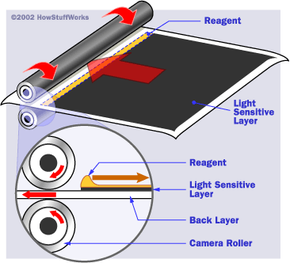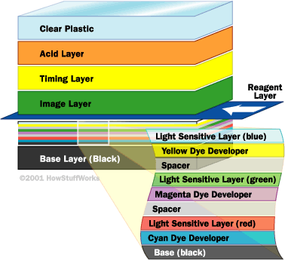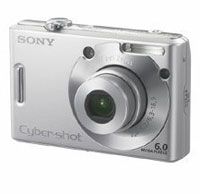
Instant camera film is remarkable because it has its own built-in developing studio. To understand how this works, you need to understand the basics of traditional photographic film. Film is a plastic base coated with particles of silver compound that are sensitive to light. Black-and-white film has one layer of silver compound, while color film has three layers -- the top layer is sensitive to blue light, the next layer is sensitive to green and the bottom layer is sensitive to red. When you expose the film, the sensitive grains at each layer react to light of that color, forming metallic silver at that layer. This gives you a chemical record of the light and color pattern.
To turn this into a picture, you have to develop the film. One developer chemical turns the exposed particles into metallic silver. The film is then treated with three different dye developers containing dye couplers. The three dye colors are cyan (a combination of green and blue light), magenta (a combination of red and blue light) and yellow (a combination of green and red light).
Advertisement
Each of these dye coupler types react with one of the color layers in the film. In ordinary print film, the dye couplers attach to particles that have been exposed. In color slide film, the dye couplers attach to the non-exposed areas. Developed color film has a negative image -- the colors appear opposite of the colors in the original scene. In slide film, the two dyes that attach to the unexposed area combine to form the color captured at the exposed layer. For example, if the green layer is exposed, yellow and cyan dye will attach on either side of the green layer, but the magenta dye will not attach at the green layer. The yellow and cyan combine to form green.
The instant camera developing process combines colors the same basic way as slide film. It has the same layers of light-sensitive grains as traditional film, all arranged on a plastic sheet. The film also contains several additional layers, however. These layers contain all the necessary chemicals for the development process. Underneath each color layer, there is a developer layer containing dye couplers. All these layers sit on top of a black base layer, and underneath the image layer, timing layer and acid layer. This arrangement is essentially a chemical chain reaction waiting to be set in motion.
See how instant camera film develops on the next page.
Advertisement


